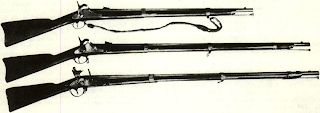The Virginia State Armory at the south end of Fifth
The move to refit the establishment as a manufacturing armory began stirring in February of . On the
Colt did not reply directly, at least he did not accept
Hartley was authorized to present a proposal of four
Second, Colt would contract exclusively with Virginia for a fixed length of time to make any of his arms
Hartley at once went to Richmond, and made a
Hartley; the water “can be used three times,” i.e., drive
After January 1, , Colt continued to be sanguine that some arrangement could be made with the
While Colt had adherents in the Capitol, and master
Adams and his assistants were engaged in this work
The move to refit the establishment as a manufacturing armory began stirring in February of . On the
Colt did not reply directly, at least he did not accept
Hartley was authorized to present a proposal of four
Second, Colt would contract exclusively with Virginia for a fixed length of time to make any of his arms
Hartley at once went to Richmond, and made a
 |
Richmond also assembled guns using captured and salvaged
|
After January 1, , Colt continued to be sanguine that some arrangement could be made with the
While Colt had adherents in the Capitol, and master
Adams and his assistants were engaged in this work

Comments
Post a Comment